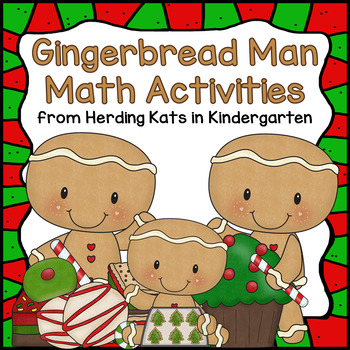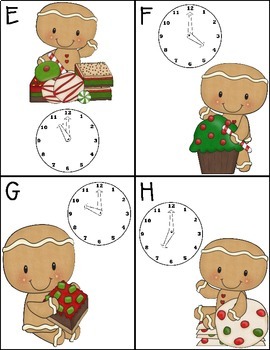Gingerbread Man Math Activities
- PDF
Description
This is a fun, Gingerbread Man Math pack filled with math workstation activities and printables! Included are 7 Gingerbread Man themed math center activities and 12 no-prep printables covering addition, subtraction, numeracy, graphing, and place value!
Center activities:
Gingerbread Ten Frames activity – students can either play a memory style game with the cards, or match them up and arrange them in numerical order in a pocket chart.
Missing Addend Read and Write the Room activity - arrange the cards you wish the students to work on (there are 8 for sums to 10 and 8 for sums to 20) and students solve the equations and write them on the recording sheet.
Gingerbread Time Read and Write the Room activity - arrange the cards you wish the students to work on (there are 8 cards for time to the hour and 8 cards for time to the half hour). Students walk around the room finding the cards and recording the matching digital time on their sheet.
Missing Addend Clothespin activity - print the cards and place a small sticker on the back of the card where the correct answer is. Students use the number lines to figure out the missing addend and the place a clothespin on the correct answer. They can check themselves by flipping the card over to see if they are correct.
Gingerbread Spin and Graph activity – students spin and graph which gingerbread the spinner lands on. When one gingerbread reaches the top of the graph they stop spinning and answer questions about their graph.
Gingerbread Roll & Cover Addition and Subtraction games – students roll 2 dice and add or subtract depending on their game board.
Gingerbread Fact Family activity – students choose a fact family gingerbread house mat and find the matching gingerbread men with the correct fact family equations. 1
No-prep Printables:
Missing Addend Worksheets. These are differentiated for sums to 10 and to 20 so you can choose which ones you want your students to work on.
More/Less worksheets – students use the 120 chart to help them find 10 more/10 less/1 more/1 less.
Gingerbread graphing sheet - students practice graphing according to a tally mark chart and answer questions about the graph.
Place Value worksheets – students work with place value cubes to represent numbers.
Comparing Numbers worksheet – students cut and paste symbols to show the relationship between sets of numbers.
You Might Also Like:
• Gingerbread Man Activities: Addition
• Gingerbread Man Graphing Activity





